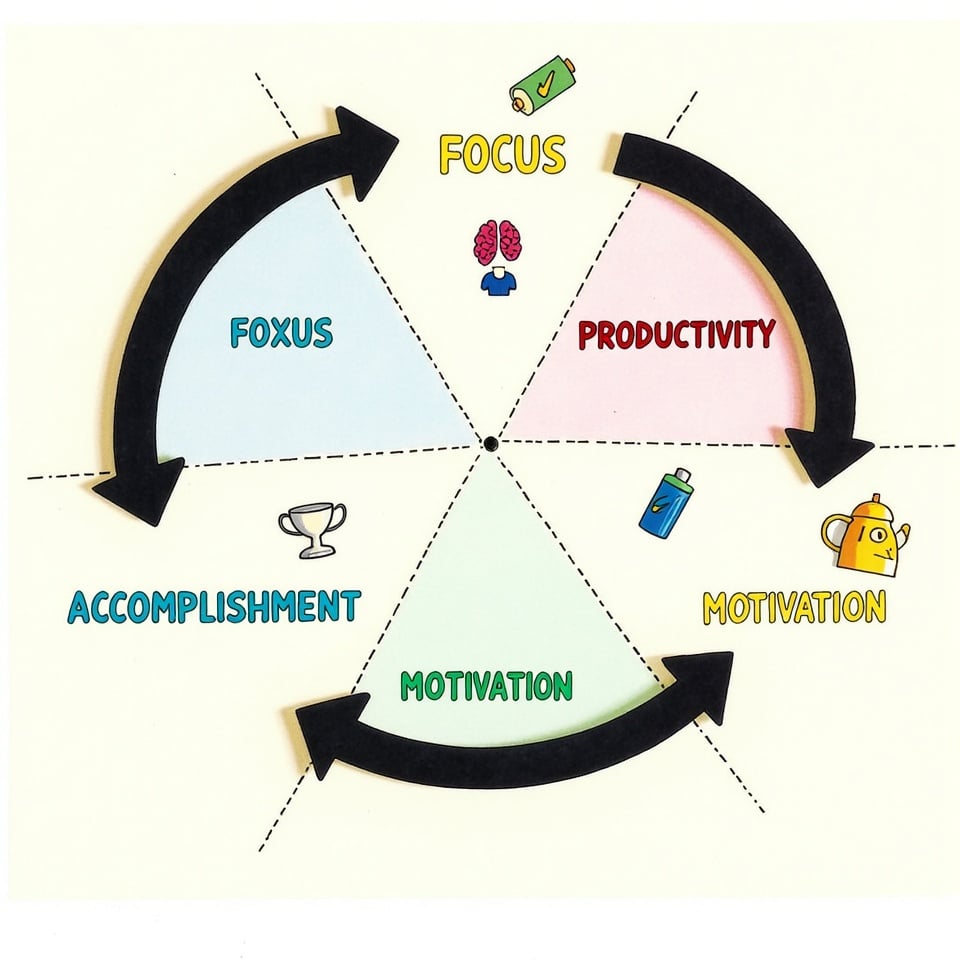Do you ever wonder why we need to learn grammar?
Grammar is like a set of rules that helps us communicate clearly and correctly in English.
Just like how you follow rules in your favorite game, grammar rules help you express your thoughts and ideas in a way that others can understand.
Learning grammar can seem like a big task, but don’t worry, it’s actually quite fun!
In this article, I’ll break down the basics of English grammar into simple and easy-to-understand bits. We’ll explore the fundamental concepts, rules, and examples that will help you become a grammar master in no time.
Whether you’re a beginner or just looking to brush up on your grammar skills, this article is perfect for you.
So, let’s get started on this exciting journey to learn and understand the basics of English grammar!
Table of Contents
Parts of Speech
Imagine you’re building a Lego castle. You need different types of blocks to create a strong and amazing structure. In language, we have different types of words that help us build meaningful sentences. These types of words are called parts of speech.
Let’s explore the nine main parts of speech:
1. Noun
A noun is a word that refers to a person, place, thing, or idea.
Examples:
- Person: John, teacher, student
- Place: park, school, home
- Thing: book, chair, car
- Idea: happiness, freedom, love
For example: “The dog is running in the park.” Here, “dog” and “park” are nouns.
2. Pronoun
A pronoun is a word that takes the place of a noun in a sentence.
Examples:
- He, she, it, they, me, you
For example: “John is going to the store. He will buy some milk.” Here, “he” is a pronoun that replaces the noun “John”.
3. Verb
A verb is a word that shows action or a state of being.
Examples:
- Action: run, jump, read, write
- State of being: be, have, seem
For example: “She is running down the street.” Here, “running” is a verb that shows action.
4. Adjective
An adjective is a word that describes or tells us more about a noun or pronoun.
Examples:
- Big, happy, blue, loud
For example: “The big red car is mine.” Here, “big” and “red” are adjectives that describe the noun “car”.
5. Adverb
An adverb is a word that describes or tells us more about a verb, an adjective, or another adverb.
Examples:
- Quickly, loudly, wisely, very
For example: “She sings beautifully.” Here, “beautifully” is an adverb that describes the verb “sings”.
6. Preposition
A preposition is a word that shows the relationship between a noun or pronoun and other words in a sentence.
Examples:
- In, on, under, above, with
For example: “The book is on the table.” Here, “on” is a preposition that shows the relationship between the noun “book” and the noun “table”.
7. Conjunction
A conjunction is a word that connects words, phrases, or clauses in a sentence.
Examples:
- And, but, or, so
For example: “I like reading books, and I also like writing stories.” Here, “and” is a conjunction that connects two clauses.
8. Interjection
An interjection is a word that expresses strong emotions or feelings.
Examples:
- Oh, wow, ouch, ah
For example: “Wow, that’s an amazing view!” Here, “wow” is an interjection that expresses strong emotions.
Sentence Structure
Imagine you’re building a tower with blocks. You need to stack the blocks in a special way to create a strong and stable tower. In language, we use words to build sentences, and sentences have their own special structure.
Let’s explore the basics of sentence structure!
Subject and Predicate
A sentence is made up of two main parts: the subject and the predicate.
- Subject: The subject is the noun or pronoun that performs the action or is the main focus of the sentence.
- Predicate: The predicate is the verb and any other words that tell us more about the subject.
Example: “The dog runs quickly.”
- Subject: dog
- Predicate: runs quickly
Think of it like a picture: the subject is the main character, and the predicate is the action or description of that character.
Types of Sentences
Just like how you can build different types of towers with blocks, we can build different types of sentences.
Let’s explore four main types:
1. Declarative Sentence
A declarative sentence states a fact or tells us something.
Example: “The sun rises in the east.”
2. Interrogative Sentence
An interrogative sentence asks a question.
Example: “What is your favorite color?”
3. Imperative Sentence
An imperative sentence gives a command or instruction.
Example: “Close the door, please.”
4. Exclamatory Sentence
An exclamatory sentence expresses strong emotions or feelings.
Example: “Wow, what an amazing view!”
Clauses and Phrases
A clause is a group of words that contains a subject and a predicate. A phrase is a group of words that doesn’t contain a subject and predicate.
Example: “I went to the store because I needed milk.”
- Independent clause: I went to the store
- Dependent clause: because I needed milk
- Phrase: to the store
Think of clauses and phrases like building blocks: you can use them to create more complex and interesting sentences!
Independent Clause: A clause that can stand alone as a complete sentence.
Dependent Clause: A clause that can’t stand alone as a complete sentence.
Punctuation Rules
Imagine you’re driving on a road with no signs or traffic lights. It would be confusing and chaotic! In language, punctuation is like the road signs that help us navigate and understand the meaning of sentences. Let’s explore the basic punctuation rules!
End Punctuation
End punctuation marks the end of a sentence.
1. Period (.)
A period is used to end a declarative sentence.
Example: “I like reading books.”
2. Question Mark (?)
A question mark is used to end an interrogative sentence.
Example: “What is your favorite color?”
3. Exclamation Point (!)
An exclamation point is used to end an exclamatory sentence.
Example: “Wow, what an amazing view!”
We have a detailed guide on punctuation rules you can read.
Commas
A comma is used to separate words or phrases in a sentence.
Examples:
- To separate items in a list: “I like reading books, writing stories, and playing games.”
- To separate clauses in a sentence: “I went to the store, and I bought some milk.”
Think of commas like taking a breath when you’re reading: they help you pause and understand the sentence better. Check out our detailed guide on comma rules.
Semicolons and Colons
A semicolon is used to separate two independent clauses that are closely related. A colon is used to introduce a list or a quotation.
Examples:
- Semicolon: “I have visited many cities; Paris is my favorite.”
- Colon: “I have three favorite foods: pizza, sushi, and tacos.”
Apostrophes
An apostrophe is used to show possession or to form contractions.
Examples:
- Possession: “The cat’s toy is red.”
- Contraction: “It’s a beautiful day today.”
Quotation Marks
Quotation marks are used to set off direct speech or quotations.
Example: “I love reading books,” said Sarah.
Think of quotation marks like a frame around a picture: they help you see the exact words that someone said.
Verb Tenses and Agreement
Imagine you’re a time traveler, and you can visit different eras and places. Verbs are like your time machine, and they help you express actions and events in different times. Let’s explore the basics of verb tenses and agreement!
Present, Past, and Future Tenses
Verb tense tells us when an action or event happens.
1. Present Tense
The present tense tells us about actions or events that happen now.
Examples:
- I am reading a book.
- She eats breakfast every morning.
2. Past Tense
The past tense tells us about actions or events that happened before now.
Examples:
- I read a book yesterday.
- They went to the park last week.
3. Future Tense
The future tense tells us about actions or events that will happen later.
Examples:
- I will read a book tomorrow.
- We will go to the beach next summer.
Subject-Verb Agreement
Subject-verb agreement means that the verb must match the subject in number (singular or plural).
Examples:
- Singular: The cat sleeps on the couch. (one cat)
- Plural: The cats sleep on the couch. (more than one cat)
Think of subject-verb agreement like a team working together: the subject and verb must be in sync.
Consistent Verb Tense Usage
Consistent verb tense usage means using the same verb tense throughout a sentence or paragraph.
Example:
- Incorrect: I was going to the store, and I buy some milk. (switching from past to present tense)
- Correct: I was going to the store, and I bought some milk. (consistent past tense)
Think of consistent verb tense usage like staying on the same road: you need to keep moving in the same direction to avoid confusion.
Common Grammar Mistakes and How to Avoid Them
Let’s explore some common grammar mistakes and learn how to avoid them!
Subject-Verb Agreement Errors
Subject-verb agreement errors happen when the verb doesn’t match the subject in number (singular or plural).
Examples:
- Incorrect: The team are going to the championship. (should be “The team is going…”)
- Correct: The team is going to the championship.
Tip: Make sure to check if the subject is singular or plural, and use the correct verb form.
Misplaced and Dangling Modifiers
Misplaced and dangling modifiers are words or phrases that are not clearly connected to the word they modify.
Examples:
- Incorrect: Having studied all night, the exam was easy. (Who studied all night?)
- Correct: Having studied all night, I felt confident about the exam.
Tip: Make sure to place modifiers close to the word they modify, and use clear language to avoid confusion.
Pronoun-Antecedent Agreement
Pronoun-antecedent agreement means that the pronoun must match the antecedent (the word it replaces) in number (singular or plural).
Examples:
- Incorrect: Everyone brought their lunch. (should be “Everyone brought his or her lunch.”)
- Correct: Everyone brought his or her lunch.
Tip: Make sure to use the correct pronoun form to match the antecedent.
Run-on Sentences and Fragments
Run-on sentences are sentences that are not separated by punctuation, while fragments are incomplete sentences.
Examples:
- Run-on sentence: I went to the store and I bought some milk and I saw my friend.
- Correct: I went to the store, and I bought some milk. I also saw my friend.
- Fragment: The big red car.
- Correct: The big red car drove down the street.
Tip: Make sure to use punctuation to separate sentences, and use complete sentences to express your ideas.
Tips for Improving Grammar Skills
Imagine you’re a master builder, and you want to construct a strong and sturdy castle. To build a great castle, you need to have the right tools and skills.
Let’s explore some tips to help you improve your grammar skills and become a grammar master!
1. Reading Extensively
Reading extensively means reading a wide variety of texts, such as books, articles, and stories.
Why it helps: Reading extensively exposes you to different writing styles, grammar structures, and vocabulary. It’s like collecting building blocks to construct your own writing castle!
Tips:
- Read books, articles, and stories that interest you.
- Pay attention to how the writer uses grammar and vocabulary.
- Take notes on new words and grammar structures you learn.
2. Practicing Writing Exercises
Practicing writing exercises means writing regularly to improve your writing skills.
Why it helps: Writing exercises help you practice using grammar rules and vocabulary in context. It’s like building a bridge between what you know and what you can do!
Tips:
- Write short stories, journal entries, or even social media posts.
- Practice writing in different styles, such as descriptive or persuasive writing.
- Get feedback from teachers, friends, or family members.
3. Seeking Feedback and Editing
Seeking feedback and editing means asking others to review your writing and provide suggestions for improvement.
Why it helps: Feedback and editing help you identify areas for improvement and refine your writing skills. It’s like having a team of experts to help you build your writing castle!
Tips:
- Ask teachers, friends, or family members to review your writing.
- Be open to constructive feedback and use it to improve your writing.
- Edit your own work to catch mistakes and make improvements.
4. Utilizing Grammar Resources and Tools
Utilizing grammar resources and tools means using online resources, apps, or books to improve your grammar skills.
Why it helps: Grammar resources and tools provide you with additional support and practice to improve your grammar skills. It’s like having a toolbox full of helpful gadgets to build your writing castle!
Tips:
- Use online resources, such as grammar guides or quizzes.
- Download grammar apps or games to practice on the go.
- Read books or guides on grammar to improve your understanding.
Now that you have these tips, you can start building your grammar skills and become a grammar master! Remember, practice makes perfect, so keep reading, writing, and learning to improve your grammar skills.
Wrapping it up!
Congratulations! You’ve completed our grammar guide!
Remember to practice regularly, ask for feedback, and use online resources to improve your grammar skills.
With persistence and patience, you’ll become a confident and skilled writer.
Keep learning and growing — you got this!







